12 of the biggest Ohio sports scandals, from tattoo-gate to Bishop Sycamore
Recent allegations raised in an NCAA sign-stealing investigation that a Michigan staffer bought tickets to at least four Buckeye games is the latest in a recent of serious and bizarre sports scandals that have rocked Ohio.
From Tattoo-gate to a phony high school playing a nationally televised game on ESPN, here's a look back at some of the more recent infamous moments in Ohio sports.
Something looks fishy: The walleye fishing scandal
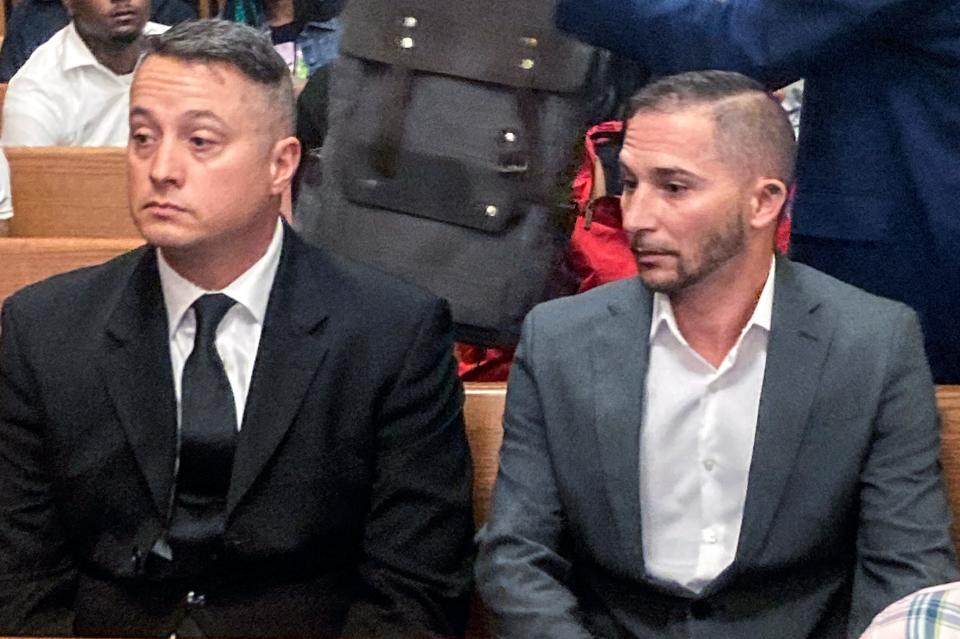
Two fishing competitors were convicted and sentenced to 10 days in the Cuyahoga County Jail in May for using lead weights and fillets to make the five fish that they caught in a Cleveland fishing tournament last year appear heavier.
Jacob Runyan, 43, of Hermitage, Pennsylvania and Chase Cominsky, 36, of Ashtabula, had their fishing licenses suspended for three years, were ordered to pay a $2,500 fine, and Cominsky was ordered to surrender his $100,000 boat. The duo admitted in a plea deal to cheating, a fifth-degree felony, and unlawful ownership of wild animals, a misdemeanor.
“I have no doubt that these two crooks cheated in multiple tournaments over the last several years. Unfortunately, we can only hold them accountable for what they did on Sept. 30, 2022,” Cuyahoga County Prosecutor Michael O'Malley said in a statement.
“Although these two deserve to have their fishing license suspended for life, the law only allows a maximum of three years. These two should be banned from every fishing tournament for life. They are thieves, and now they are convicted felons. This sends a message to the fishing community that cheaters will be held accountable in Cuyahoga County.”
The tournament hosted fishermen from across the country to see who could catch the heaviest walleye, and offered a cash price of almost $30,000. The tournament director noticed Runyan's and Cominsky's fish weighed more than what they appeared. He cut them open in front of the pair and their competitors and found several weights of varying sizes stuffed inside, as well as fillets wrapped around the weights. They were immediately disqualified and told to leave.
The scandal rocked the world of competitive fishing and grabbed international media attention. Other competitive fishers expressed disgust and anger at the revelation.
"Tattoo-gate"
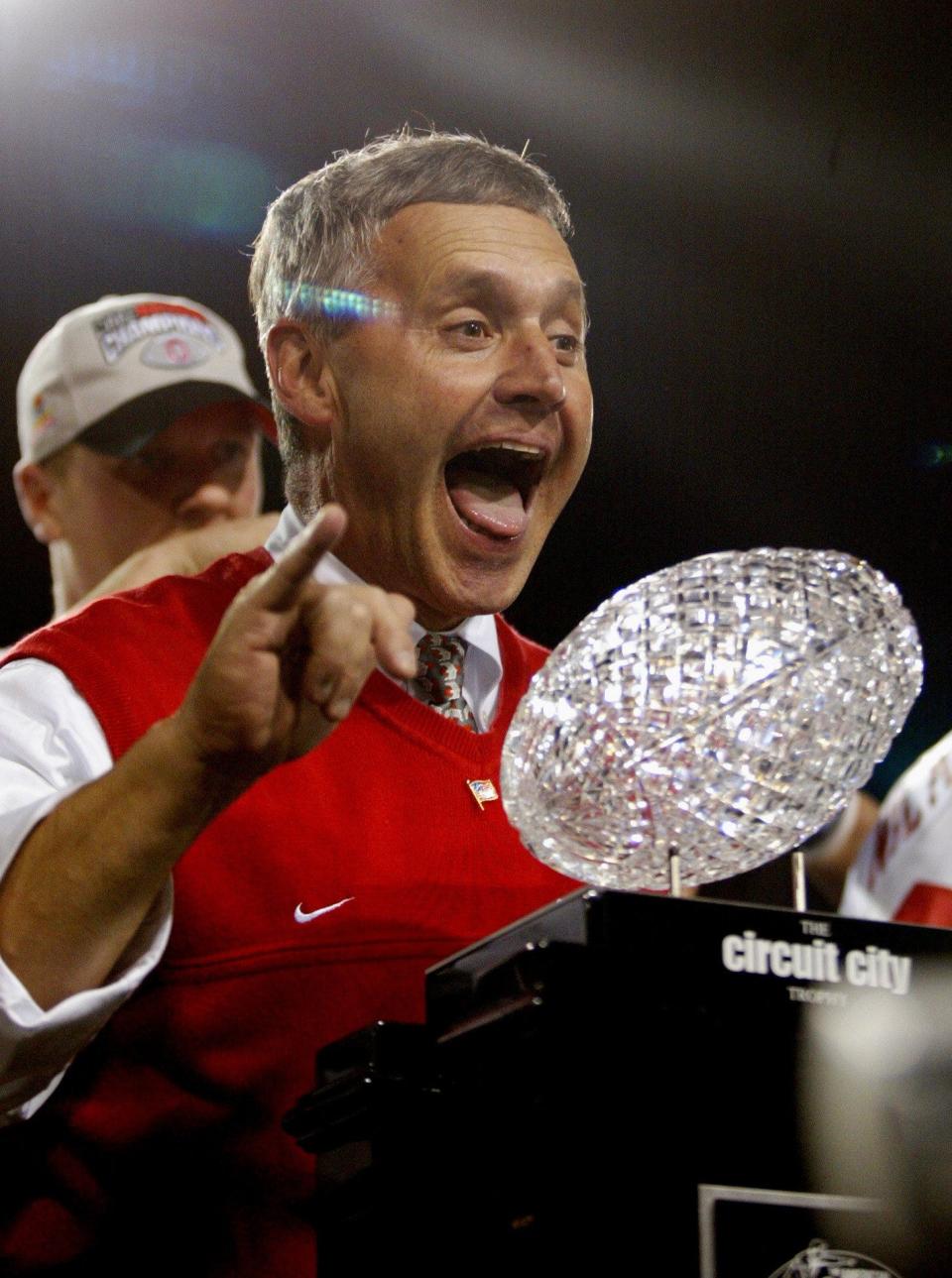
Although the incident happened over a decade ago, the "Tattoogate" scandal is seared into the memories of OSU fans and forced the resignation of one of its most famous head coaches.
DeVier Posey, Mike Adams, Boom Herron, Terrelle Pryor, and Solomon Thomas, former Buckeye football players and known as the "Tattoo 5", set up an arrangement with Edward Rife, the owner of a Columbus tattoo parlor, where in exchange for trading football memorabilia like championship rings, trophies, jerseys, and other football-related items, they would receive discounted tattoos, cash, and other benefits.
After an NCAA investigation, the former Buckeyes were suspended for the first five games of the 2010-11 season. The NCAA also vacated the team's 12-1 season for that year, including Big Ten and Sugar Bowl Championships.
Jim Tressel, then head football coach at Ohio State, at first denied knowing about the tattoo scandals or that his players were involved. Investigators later found that Tressel did know of these violations after finding emails showing that he did have prior knowledge before the NCAA even knew.
Tressel was fined $250,000 for the scandal and suspended for two games, then forced to sit out for five games to match the suspension of the players. Tressel later resigned as head coach after a Sports Illustrated article revealed Ohio State players had been trading and selling memorabilia going as far back as 2002.
The former players who were involved in the scandal asked in 2021 to have their game records reinstated by the NCAA. In a July 2021 post on X, the social media website formerly known as Twitter, Terrell Pryor called for the reinstatement of the team's record.
"The time has come, we should get out [sic] wins back, records back, and the legacy of [Jim Tressel] back and not look past it!," Pryor tweeted on July 13, 2021.
Reading sign language
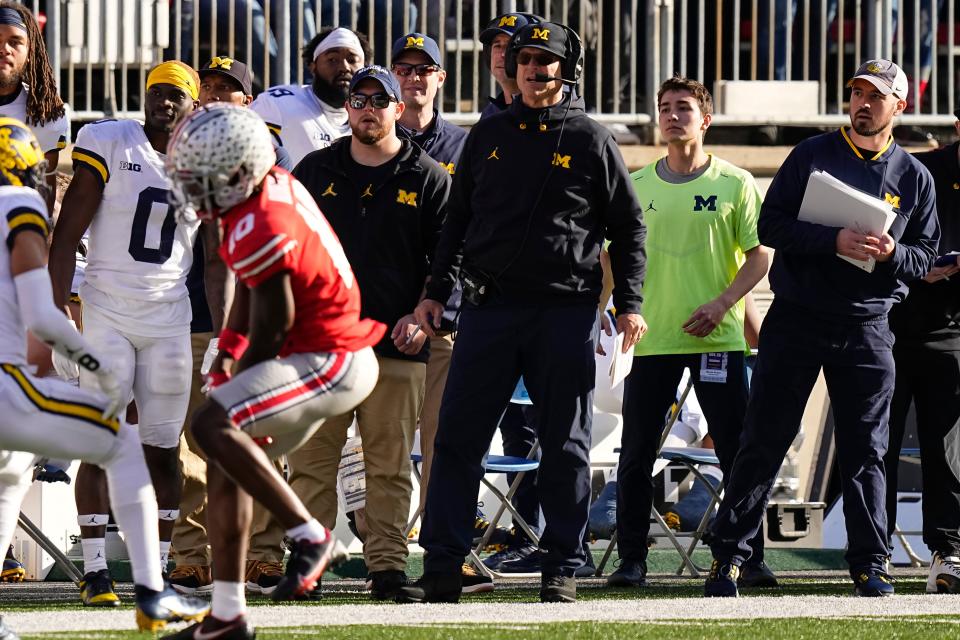
Conor Stalions, the suspended Michigan football staffer who has been center stage in an investigation involving sign stealing, now stands accused of purchasing in his name tickets for over 30 football games at 11 Big Ten Schools over the past three years, with the intent of scouting out players from other schools.
One of those tickets was for Ohio State vs. Penn State, which took place on Saturday. According to ESPN, Stalions had tickets for both sides of the stadium in the matchup. The University of Michigan is scheduled to play against Ohio State and Penn State on Nov. 11 and Nov. 25, respectively.
According to ESPN, the NCAA is in the process of obtaining video evidence of the use of "illegal technology" used in scouting tied to tickets purchased by Stalions. He forwarded the tickets he bought to at least three different people in different areas of the country, according to ESPN sources.
This is the second time that the NCAA has found the University of Michigan at the center of accusations involving foul play and rule violations.
The NCAA previously ruled that Michigan was involved with Level II recruiting violations dating back to 2021 and that coach Jim Harbaugh "misled" investigators looking into the violations, leading to his being charged with a Level I violation, the most serious of offenses. The university suspended Harbaugh for the first three games of the season as a result. The NCAA has yet to levy a penalty.
Ohio State sex abuse scandal

The Ohio State University sex abuse scandal came to light after a former Ohio State wrestler approached the Dispatch with allegations of abuse by Dr. Richard Strauss, who worked in the student health department at the school in 1979. Soon after, The Ohio State University announced an investigation into the allegations and asked former students and coaches to come forward with any information.
Perkins Coie LLP, an independent law firm hired by The Ohio State University, launched its own investigation in 2019 and found evidence of widespread abuse by Dr. Strauss during his tenure and that university staff "had knowledge of Strauss' sexually abusive treatment of male student patients as early as 1979." The report also states that even after staff became aware of the allegations in 1996, officials kept Strauss as a tenured faculty member until 1998, when he volunteered to retire.
Several former wrestlers accused U.S. Rep. Jim Jordan of knowing about Strauss' abuse and doing nothing when students came forward. Jordan has denied knowing anything about the allegations, while victims have accused him of being part of a cover-up.
Since the bombshell investigation, the university has paid over $60 million in damages to victims, and there are still lawsuits pending. The school also issued an apology after the investigation found that coaches and administrators knew about the abuse and failed to intervene. The school denies covering up any allegations.
'BS' High School
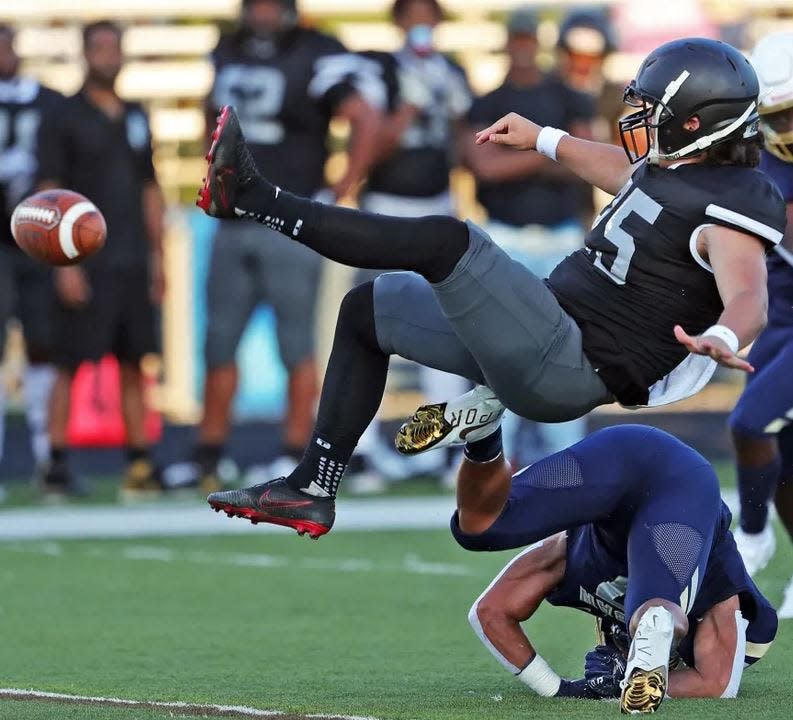
Bishop Sycamore High School rose to national prominence when they played against Florida's IMG Academy as part of ESPN's High School Kickoff Series. Football fans expected the game to be competitive and thought it would be a showdown between two elite football programs; instead, what the fans witnessed was a complete blowout, with Bishop Sycamore suffering a 58-0 loss. After the devastating defeat, questions arose about the team's legitimacy and whether or not they were even allowed to play against a high-ranked team such as IMG. After finding several instances of oversight, such as players' names not matching what commentators had and little information on the school itself, the lies and fraud unraveled.
A 41-page report by the Ohio Department of Education revealed that Bishop Sycamore wasn't a "real school," did not have a physical location, nor did they even have a roster of teachers. Overall, the department determined that the school "did not meet minimum state requirements". There were also discrepancies in how many students the school had enrolled. Leroy Johnson, who served as the head coach, told USA TODAY Sports that there were between 75 and 80 students enrolled, but according to paperwork filed with the state, there was only one.
The scandal surrounding the school is the subject of an HBO documentary titled 'BS High," and features interviews with former players, coaches, and the mastermind behind the fraud himself, Leroy Johnson. Directed by Academy Award-winning filmmakers Travon Free and Martin Desmond Roe, the documentary puts a spotlight on how Bishop Sycamore was able to play against some of the highest-ranked high schools while it was built on a mountain of deceit and fabrications, what the players were promised, and how a serial conman was able to pull it off.
Pete Rose Gambling Scandal
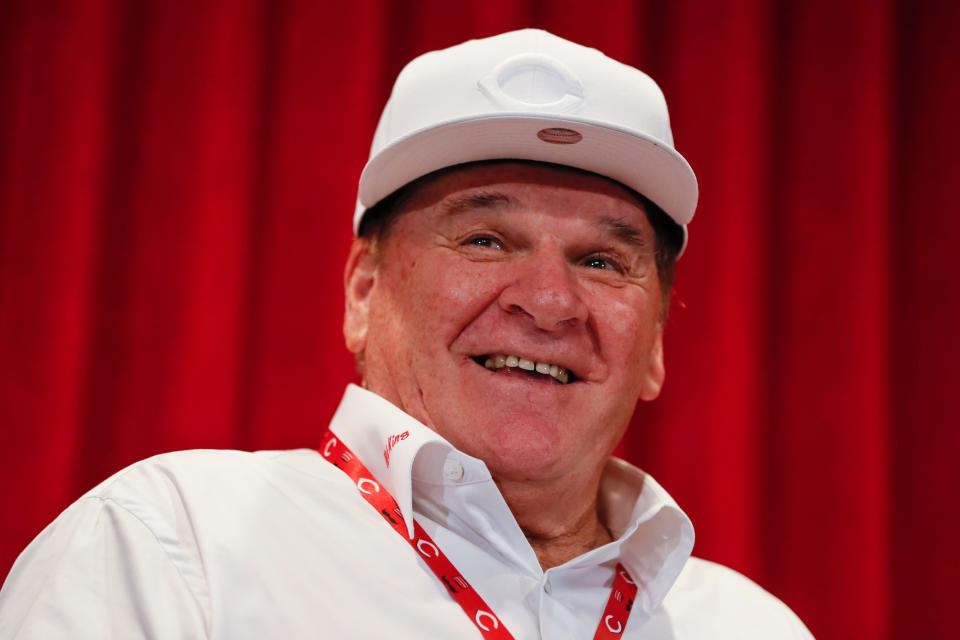
Pete Rose is a household name in baseball for leading the Cincinnati Reds. He was a "fan favorite at the heart of the Big Red Machine." But all that came crashing down when allegations arose that he was placing bets on the Reds while leading the team.
Amidst the swirling allegations, the IRS seized betting slips with Rose's name and fingerprints. They soon discovered Rose was betting big bucks on baseball - between $8,000 and $10,000 daily. Soon after, the league launched its own investigation, producing a 225-page report from investigator John Dowd. Nicknamed "The Dowd Report," it laid out all of Rose's gambling activities, including his betting in 1987, which consisted of 52 Reds games.
Following the report, the league handed Rose a lifetime ban from the sport. He consistently denied the allegations for 15 years until he released his 2004 autobiography, My Prison Without Bars, and copped to the accusations on ESPN radio in 2007.
"For the last 14 years I've consistently heard the statement: 'If Pete Rose came clean, all would be forgiven. Well, I've done what you've asked," he wrote in the book via USA Today's Mike Dodd. Conversations have cropped up about the possibility of Rose's reinstatement, but nothing is set in stone, and the league doesn't seem to have plans to do so.
Marge Schott
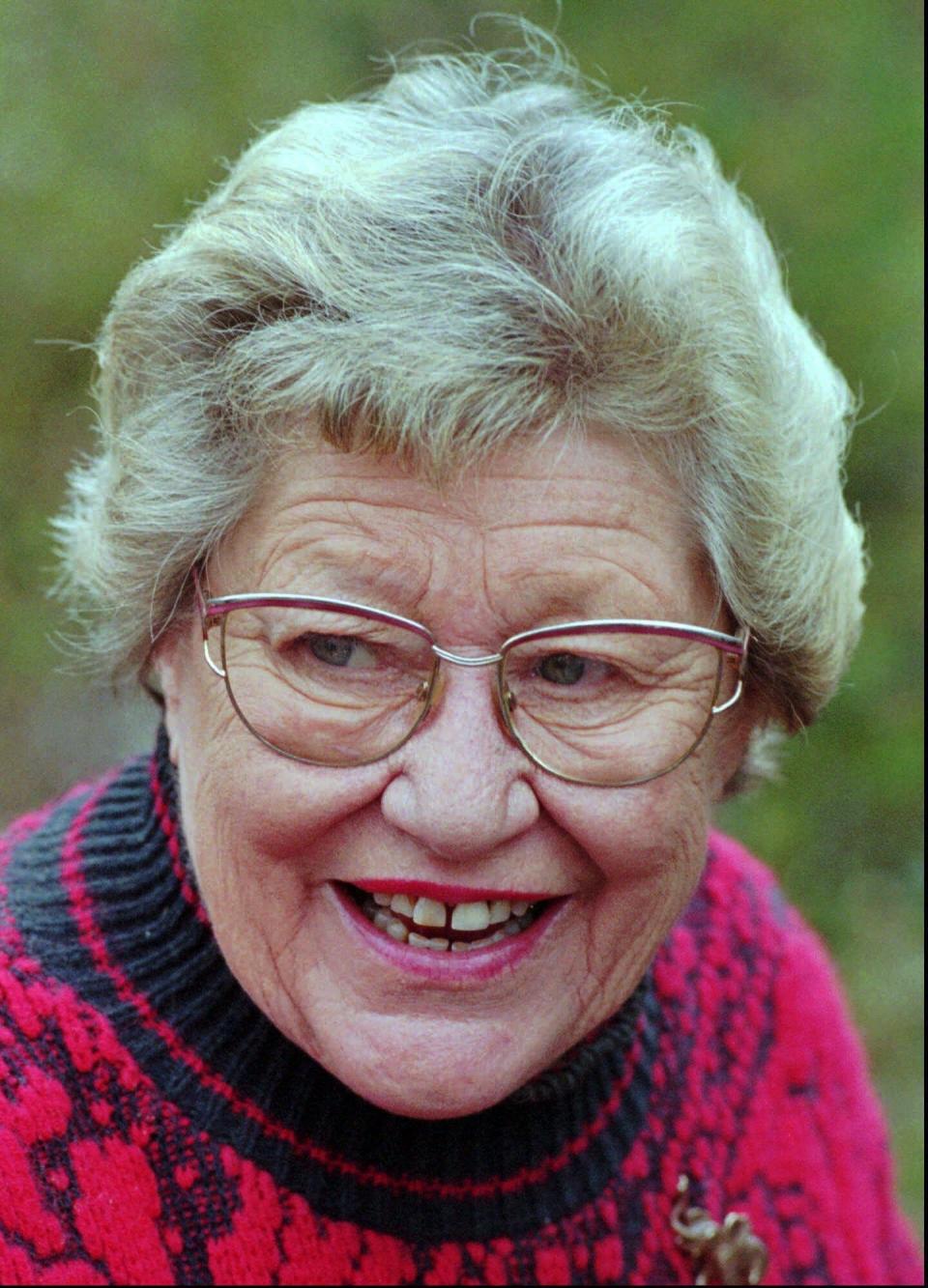
While Marge Schott became known as a philanthropist who donated to worthy causes, her kind actions were overshadowed by her reputation for racism and outlandish comments regarding minorities.
Schott, who owned the Cincinnati Reds from 1984 to 1999, came under heavy criticism after disparaging Black people, Jews, and the Japanese. These slurs earned her a one-year ban from baseball in 1993. The end of her reign came after she publicly praised Hitler in a 1996 ESPN interview. Following the interview, she was forced to give up the day-to-day control of the Reds. Soon after, she sold the remainder of her shares to the team.
When nationwide protests in 2020 began to challenge racism and white supremacy seriously, conversations sparked about changing the name of the Marge Schott Stadium in California. Jordan Ramey, a former University of California baseball player, led a petition to change the stadium's name in the summer of 2020. The UC's board of trustees voted unanimously to remove Schott's name.
Brutus Buckeye vs. Rufus the Bobcat
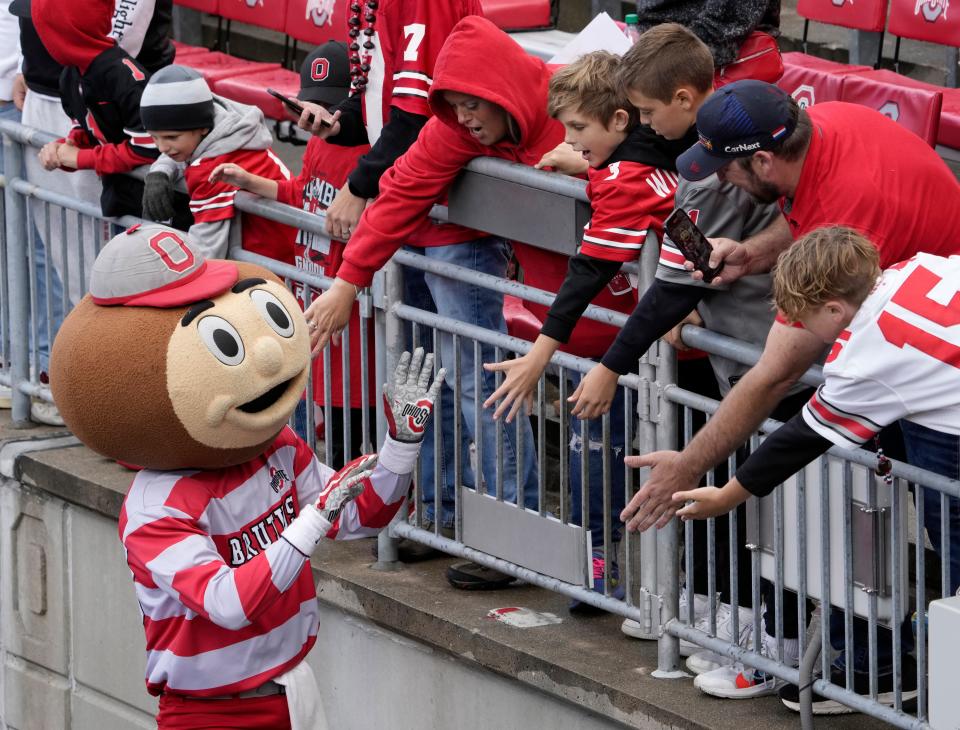
During a 2010 match against Ohio University, The Ohio State University mascot, Brutus Buckeye (played by Sean Stazen), marched at the head of the players when the opposing mascot for OU, Rufus the Bobcat (played by Brandon Hanning), darted at and tackled Stazen out of the blue, losing his mascot head in the process. While Stazen recovered from the tackle and appeared unfazed, the cantankerous Bobcat tackled him again, and this time, he held onto the Buckeye and pummeled him, dragging him to the ground and continuing the attack.
The two eventually got back on their feet, and security escorted the Bobcat off of the field. The event has gone down as one of the most infamous mascot fights in college football history. The instigating Bobcat had been planning this sneak attack for the better part of two years and was satisfied with the result.
"It was actually my whole plan to tackle Brutus when I tried out to be mascot," Hanning said. "I tried out about a year ago, and the whole reason I tried out was so I could come up here to Ohio State and tackle Brutus."
The stunt cost him his position as the school mascot, and he was banned from any affiliation with the athletics department. He eventually dropped out and enrolled in Hocking College. Ohio University apologized, stating "they regret the negative effect [Hanning's actions] may have on the relationship between the two schools."
The Buckeyes still won the game 43-7.
The Urban Meyer quagmire
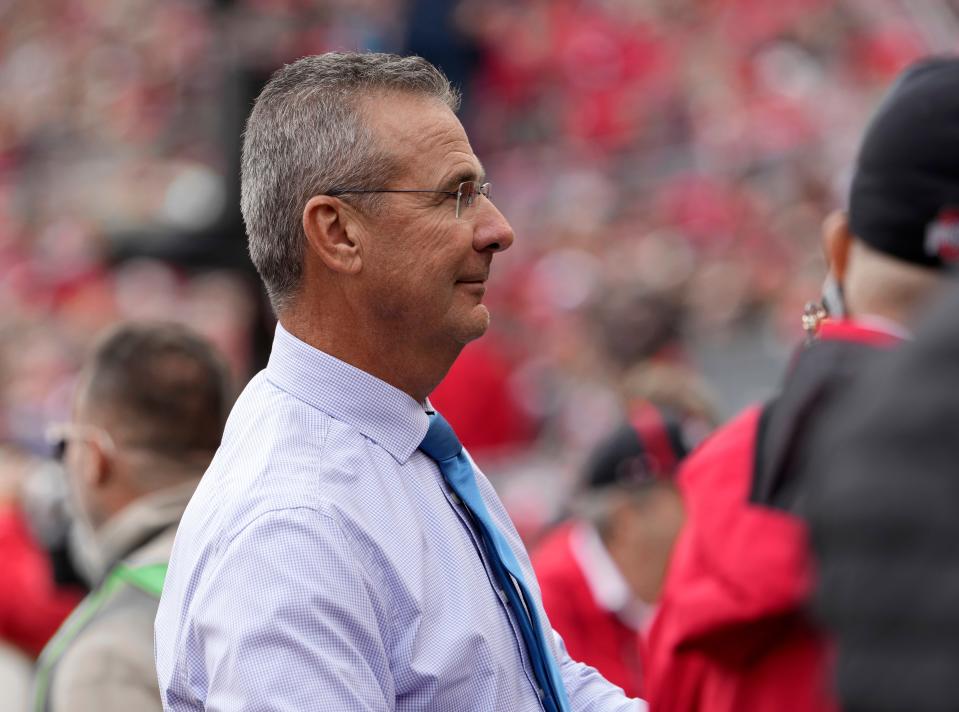
The Ohio State football team went through a shake-up in the summer of 2018 after allegations of domestic violence by one of the assistant coaches surfaced as did accusations that head coach Urban Meyer knew and chose to keep him on the team.
Zach Smith, the OSU receivers coach, was fired in July 2018 after his ex-wife filed a protection order against him and an allegation of a previous domestic violence incident. The university placed Meyer on administrative leave after he denied having any knowledge of a 2015 domestic violence incident involving Smith and his ex-wife. An OSU investigative panel dug into the domestic violence accusations and for evidence of any attempt at a cover up by Meyer or any other OSU staff.
The panel found that although Meyer and athletic director Gene Smith didn't technically follow procedures outlined in their contract regarding reporting Smith's alleged spousal abuse, they did so "upon a good faith belief that they did not have sufficient information to trigger a reporting obligation or initiate a disciplinary action in the absence of law enforcement action."
The report also pointed out that other employees were unclear about the reporting requirements. However, it also states that Meyer and Gene Smith went "too far" in allowing Smith to maintain his employment in light of repeated misconduct. Some of these infractions included racking up a "significant bill" at a Florida strip club during a recruiting trip, delinquency on paying for iPhones and expenditures related to games and failing to attend recruiting events and scheduled practices.
Both Meyer and Gene Smith were suspended without pay for not taking action against Smith as these issues came to light.
The Woody Bowl
The 1978 Gator Bowl had the Ohio State Buckeyes go toe to toe with South Carolina's Clemson University. The then 65-year-old Woody Hayes led the Buckeyes and had already won 205 games and five national titles during his 28 seasons with Columbus.
The Clemson Tigers held a 17-15 lead during the game and the Buckeyes felt the pressure mounting. Buckeyes quarterback Art Schlichter threw the ball right into the hands of Clemson's backup guard Charlie Bauman. Schlichter then tackled Bauman at the feet of Hayes. One of Clemson's linebackers, who was running behind Bowman, said he heard Hayes yell to Baum, "You SOB, I just lost my job!"
After the play, Hayes grabbed Bauman by his jersey and swung his fist right into Bauman's throat. A brief melee broke out as both coaches and players tried separating Bauman and Hayes. While OSU players had all experienced Hayes getting physical with them on more than one occasion, this was different. It was unheard of to put hands on a player from an opposing team.
While the rest of the team flew home together, Florida state troopers drove Hayes to their team plane. While the team was in the air and on their way to Columbus, Hugh Hindman, the athletic director, announced that Hayes had been fired over the incident.
Bauman, who did not want fame or attention from the incident, evidently has no hard feelings towards Hayes about the punch. His last interview regarding the incident was in 2008 with the Florida Times-Union for the game's 30th anniversary.
"I don't have anything bad to say about coach Hayes," Bauman told the Times-Union. "He made a mistake. We all make mistakes. I mean, he didn't hurt me or anything."
The Fall of Art Schlichter
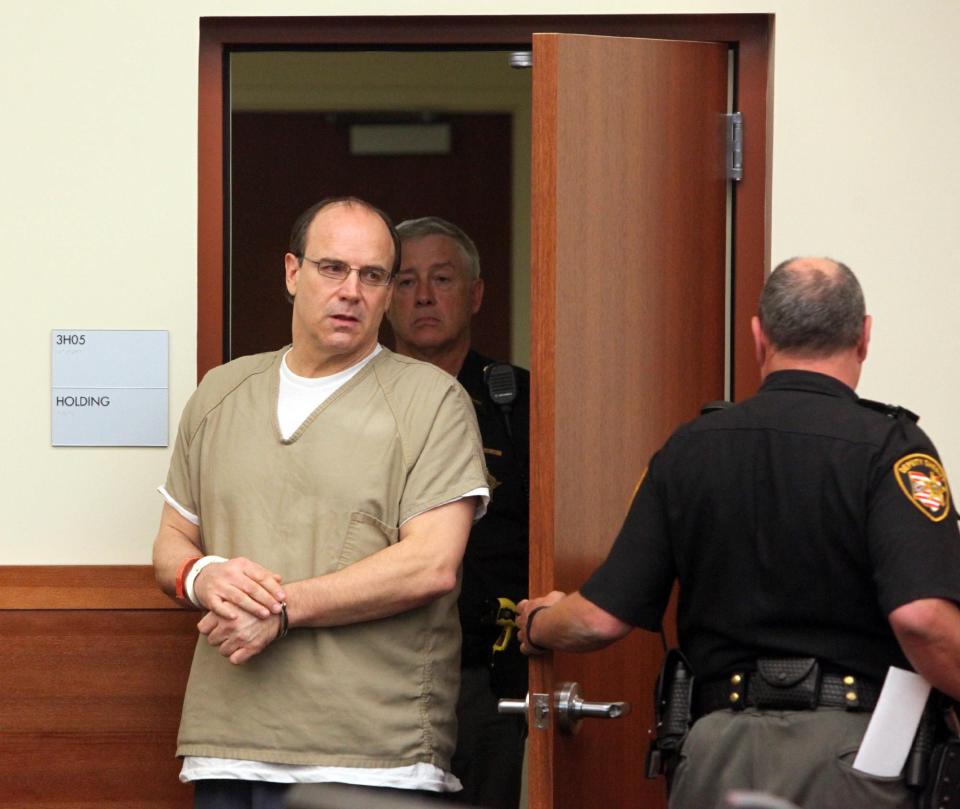
Art Schlichter rose to prominence as a talented athlete who excelled in basketball and football. However, his collegiate and professional career was cut short by a prolific gambling addiction, compounded by criminal and civil issues that culminated in him serving lengthy prison sentences and being stuck in a cycle of perpetual debt related to his gambling.
Throughout his high school and college career, Schlichter had developed a serious gambling addiction and blew through hundreds of thousands of dollars from betting on sports games. These bets overshadowed Schlichter's feats on the field and culminated in the FBI launching an investigation into his gambling habits in 1983 while at OSU. At one point, Schlichter owed half a million dollars in gambling debts and another $130,000 for his condo. He went on to accrue other massive debts, became intertwined in numerous frauds and illegal gambling ventures, and was suspended from the NFL indefinitely.
Even after several attempts at rehab and revolving in and out of court for fines, outstanding debts, bankruptcy and criminal matters, Schlichter has made little progress on the road to recovery and a life of normalcy. He has Parkinson's disease and dementia and was recently sentenced to a year probation after being charged with cocaine possession.
The rise, fall, and rise of Maurice Clarett
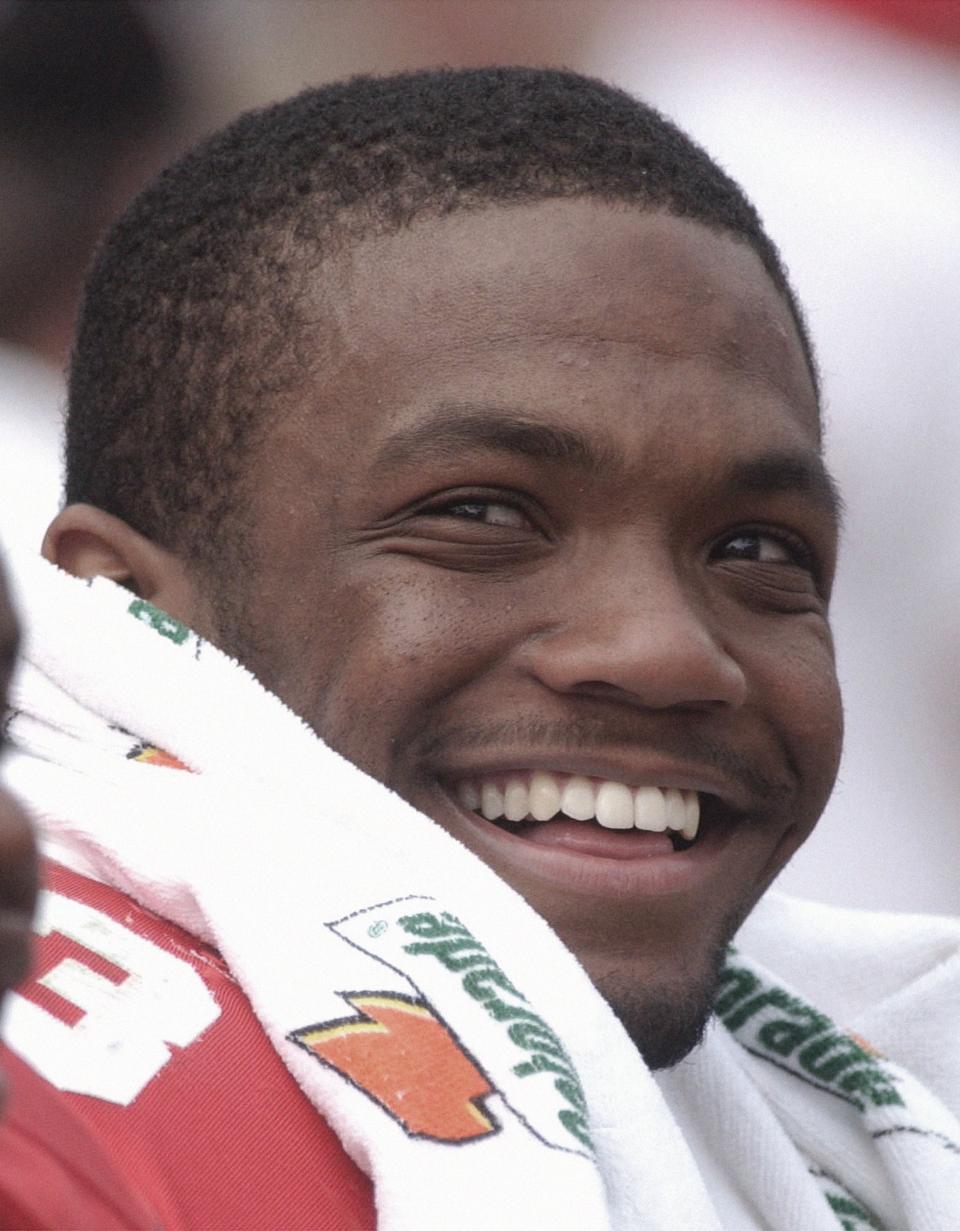
Initially, a promising star who quickly made a name for himself as one of the top football recruits in the country, Maurice Clarett's bright future came crashing down with back-to-back controversies, arrests, and even a stint in prison.
Clarett began college as a highly sought-after recruit. He rejected offers from Notre Dame, Fresno State, and the University of Miami. He helped OSU win a national championship but was dismissed in 2003 for illegally accepting "improper benefits" worth thousands of dollars. Before the dismissal, Clarett was known during his time at OSU to argue with coaches and OSU officials. After his dismissal, he sued to be allowed into the NFL but was unsuccessful.
Soon, Clarett's life took a dark turn. On New Year's Day 2006, he was charged with aggravated robbery after he robbed two people at gunpoint in Columbus. He was arrested again in August 2006 after leading police on a high-speed chase. After catching and subduing Clarett with pepper spray, police discovered multiple handguns, an AK-47, and an open bottle of Grey Goose vodka.
Get more Ohio State football news by listening to our podcasts
This article originally appeared on The Columbus Dispatch: From Pete Rose to Tattoo-gate: 12 sports scandals that rocked Ohio

